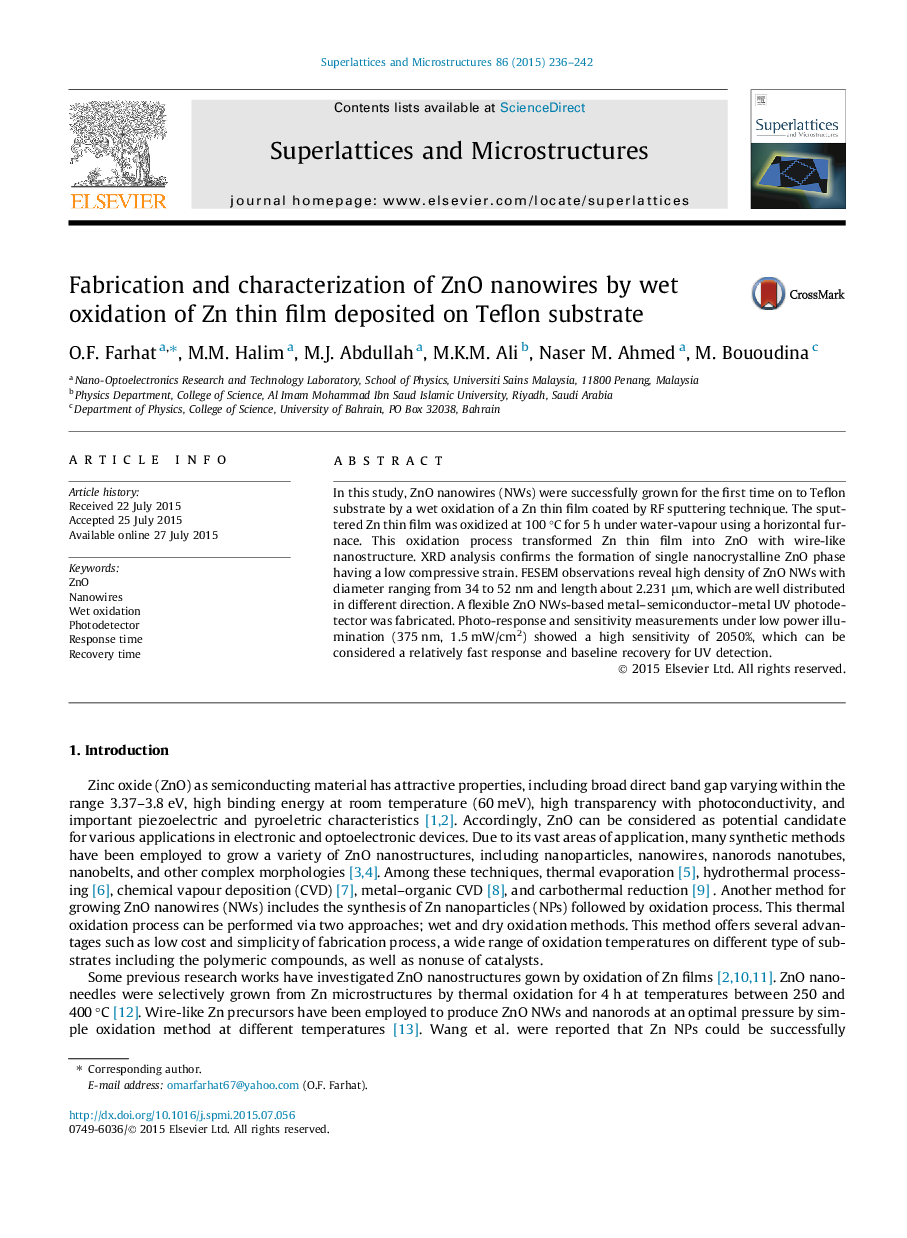| Article ID | Journal | Published Year | Pages | File Type |
|---|---|---|---|---|
| 1552934 | Superlattices and Microstructures | 2015 | 7 Pages |
•ZnO nanowires (NWs) were successfully grown for the first time on to Teflon substrate by a wet oxidation of a Zn thin film coated by RF sputtering technique.•Then we fabricated a flexible ZnO NWs-based metal–semiconductor–metal UV photodetector. the fabricated UV photodetector photo-response and sensitivity measurements under low power illumination showed quite higher values than that reported for ZnO-based UV photodetector on to Teflon substrate and can be considered a relatively fast response and baseline recovery for UV detection.•The prototype device shows a simple method for nanorods synthesis and demonstrates the possibility of constructing nanoscale photodetectors for nano-optics applications.
In this study, ZnO nanowires (NWs) were successfully grown for the first time on to Teflon substrate by a wet oxidation of a Zn thin film coated by RF sputtering technique. The sputtered Zn thin film was oxidized at 100 °C for 5 h under water-vapour using a horizontal furnace. This oxidation process transformed Zn thin film into ZnO with wire-like nanostructure. XRD analysis confirms the formation of single nanocrystalline ZnO phase having a low compressive strain. FESEM observations reveal high density of ZnO NWs with diameter ranging from 34 to 52 nm and length about 2.231 μm, which are well distributed in different direction. A flexible ZnO NWs-based metal–semiconductor–metal UV photodetector was fabricated. Photo-response and sensitivity measurements under low power illumination (375 nm, 1.5 mW/cm2) showed a high sensitivity of 2050%, which can be considered a relatively fast response and baseline recovery for UV detection.
